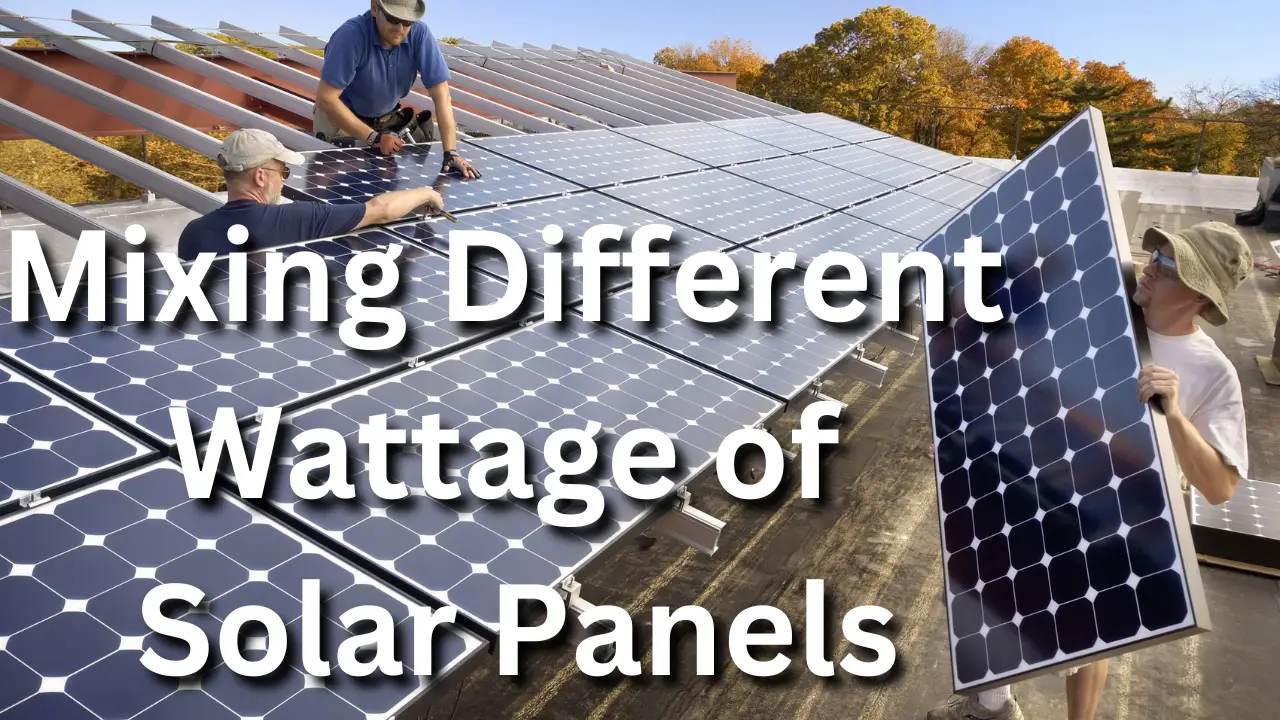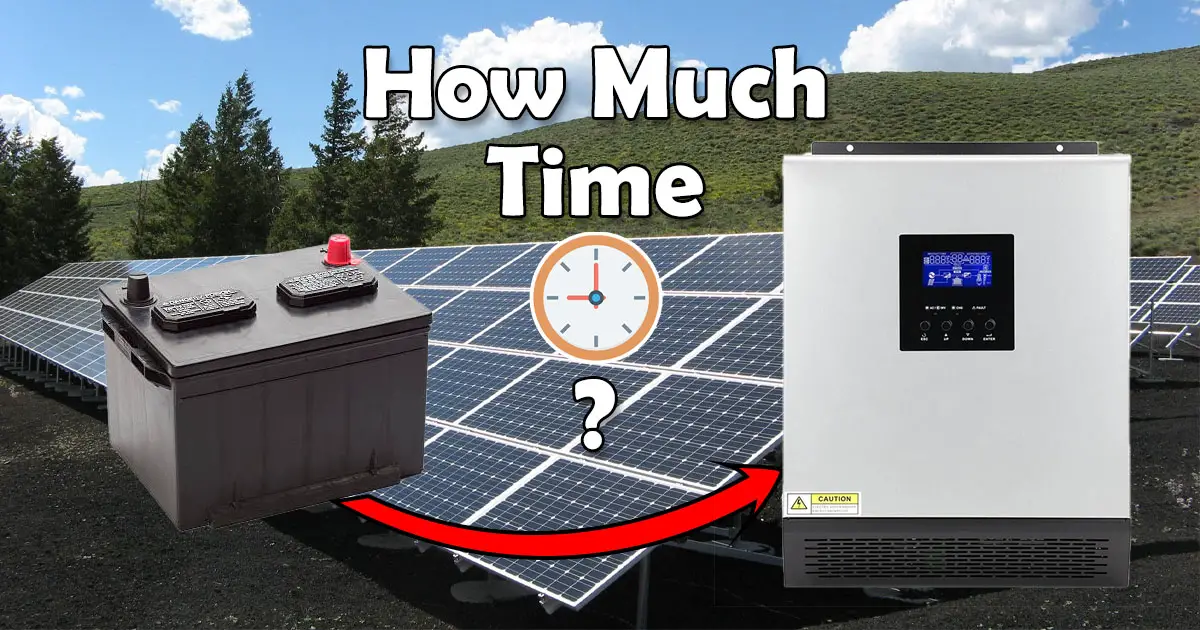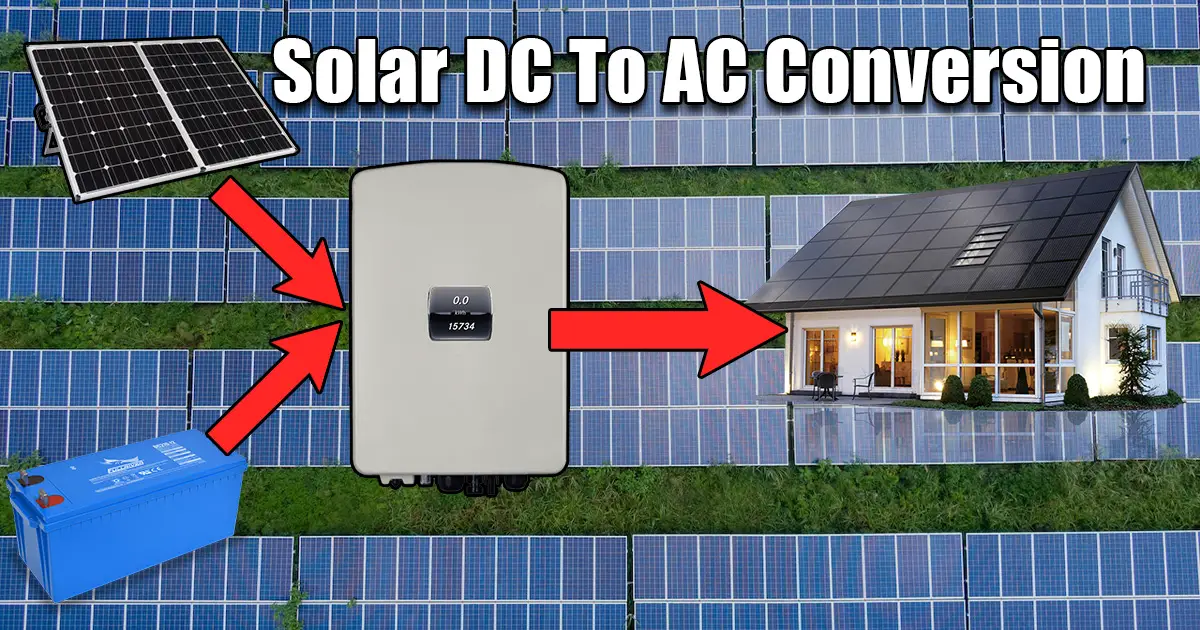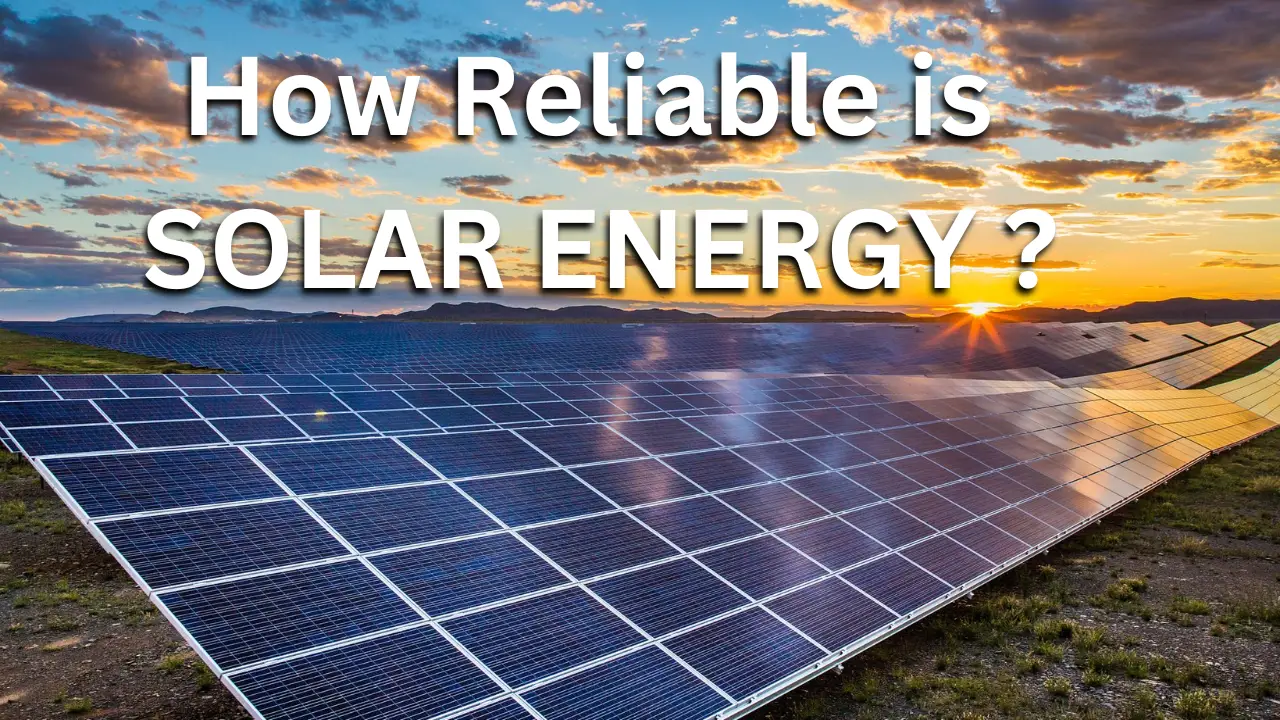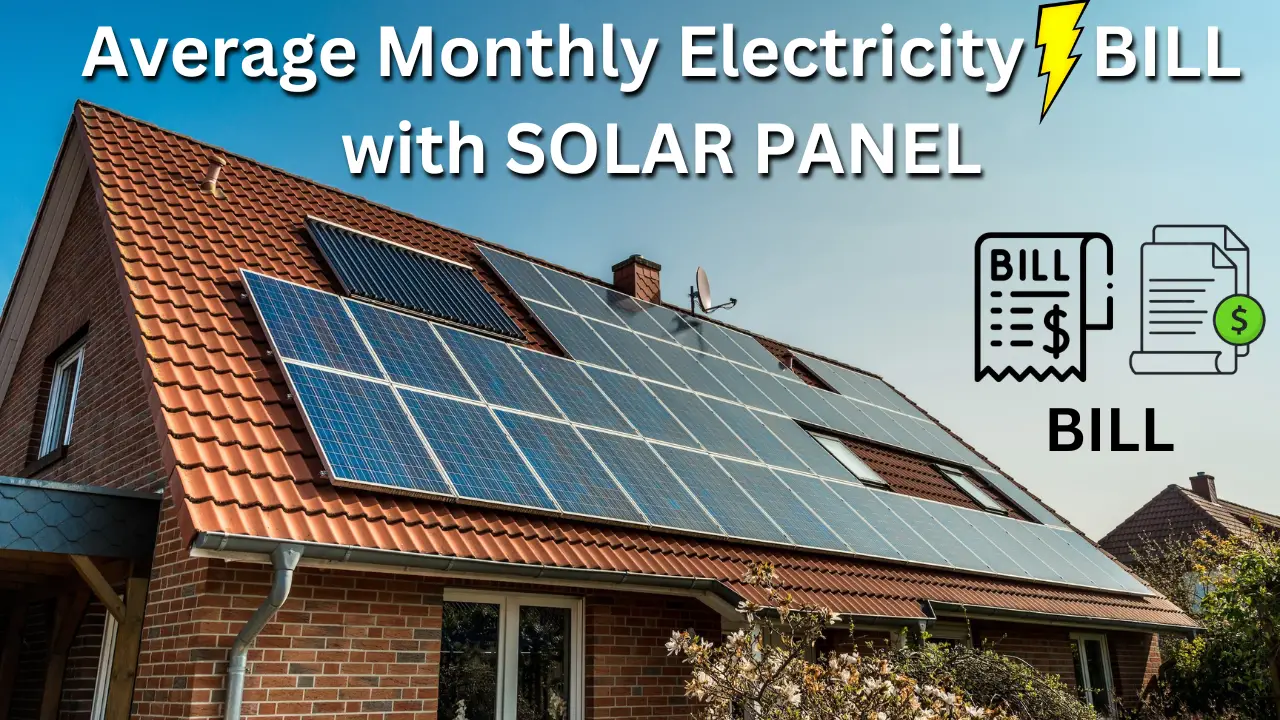A growing number of people are using solar panels due to their affordability and environmental friendliness. There are several things to think about when mixing solar panels of different wattages, such as the electrical characteristics of each panel, the wiring setup, and the overall performance.
In this post, we will discuss the potential dangers and difficulties that come with combining solar panels with different wattages, how wattage mixing impacts the wiring system, and how to connect solar panels in either a series or parallel configuration.
Is mixing different wattages of solar panels possible? Have you ever thought about buying a 200-watt solar panel and combining it with your 100-watt solar panel currently installed?
If so, you are allowed to mix solar panels with different wattages. However, this is not typically recommended because using panels with varying wattages together lowers both the efficiency and the amount of power produced.
The Risks and Considerations of Combining Solar Panels in a System
Mixing solar panels in a system can be a complex process that needs a good understanding of the electrical properties of the panels. There is a potential for mistakes when combining panels with different wattage, voltage, and amperage ratings, which could lower the system’s efficiency and power production.
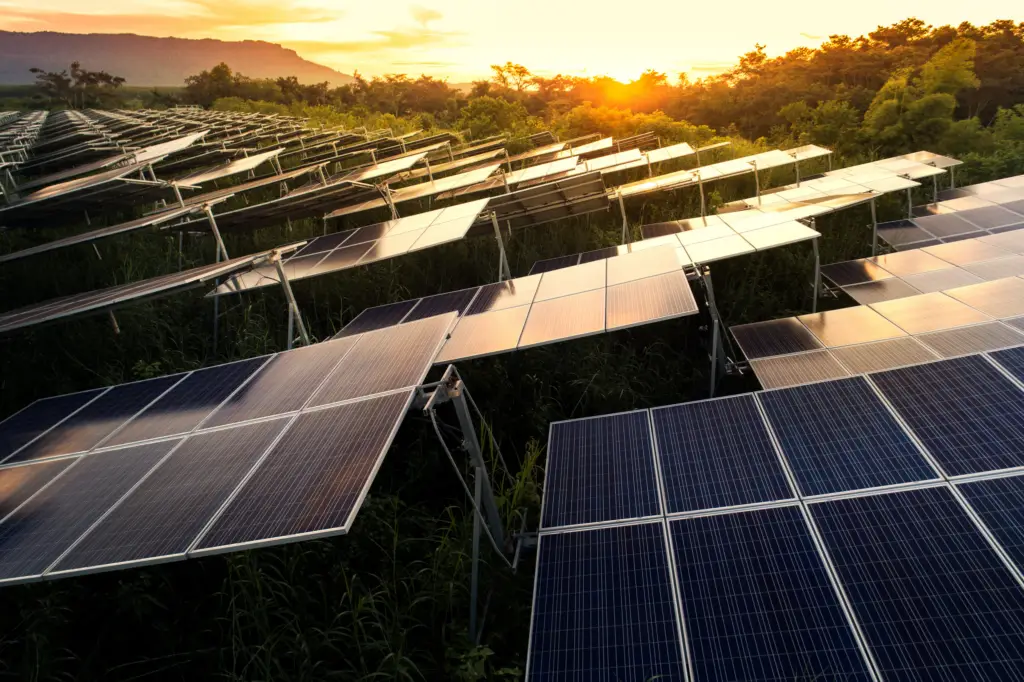
The fact that each solar panel has a unique voltage and amperage output is one of the key reasons why combining solar panels is frequently disallowed. The voltage and amperage output from the panels may be out of whack if they are not correctly matched, which could reduce system performance and endanger the panels.
Solar panels create electricity according to their unique power ratings, established by their wattage, voltage, and amperage when coupled in a system. When you mix solar panels with varying wattages, the system’s output is constrained by the lowest-rated panel, which lowers the system’s overall power output.
For example, imagine you have a system with two solar panels, one rated at 200 watts and the other at 300 watts, then the total power output of the system will be limited by the 200-watt panel, even if the 300-watt panel is capable of generating more power.
Hence, when integrating multiple solar panels, it becomes vital to consider their unique attributes, including wattage, voltage, and amperage. To get maximum performance, it is suggested to pick panels with comparable specifications. You should also seek professional installation to ensure the panels are compatible with the system.
How Does Mixing Determine the Wiring System?
When using solar panels with varying wattage ratings in conjunction with one another, it is imperative that the appropriate wiring system be selected in order to connect the individual panels. The wiring system can be connected in either series or parallel, and the correct choice will depend on the wattage of the panels.
When you are dealing with mismatched wattage panels, the wiring system that you choose becomes important. According to the preset formulas, similar voltages should be connected in series, while similar currents should be connected in parallel. This indicates that you should connect panels in parallel rather than series when you have panels with ratings of the same voltage but of different wattages. If you have panels with the same current rating but different wattage, you should connect them in series.

However, the main goal is mostly to put solar panels together to increase solar-generated power.
Not only is connecting several solar panels in series, parallel, or mixed mode an efficient and simple approach to constructing a cost-effective solar panel system, but it also enables us to add more solar panels in the future to satisfy our rising daily demand for power.
How to connect your panels depends on the following factors:
- Type of solar panels you have
- The amount of solar power that you wish to produce
Wiring Connections for Mixing Solar Panels
How to Connect Panels in Series

Series connection of solar panels involves linking the positive terminal of one panel to the negative terminal of the next panel, creating a chain. This configuration results in the sum of the individual voltages as the total voltage, while the total current remains equivalent to the output current of a single panel.
Example-
Suppose you have three solar panels with the following specifications:
| Panel 1 | 6 volts | 3 amps |
| Panel 2 | 6 volts | 3 amps |
| Panel 3 | 6 volts | 3 amps |

Illustrated in the image above, a practical example demonstrates the connection of three solar panels, each with specifications of 6 volts and 3 amps. Consequently, the total voltage obtained is 18 volts, with a total current of 3 amps.
The total voltage output of the circuit –
6V + 6V + 6V = 18V
The overall current output of the circuit would be: 3A
The total power output of the circuit would be –
18V x 3A = 54 watts
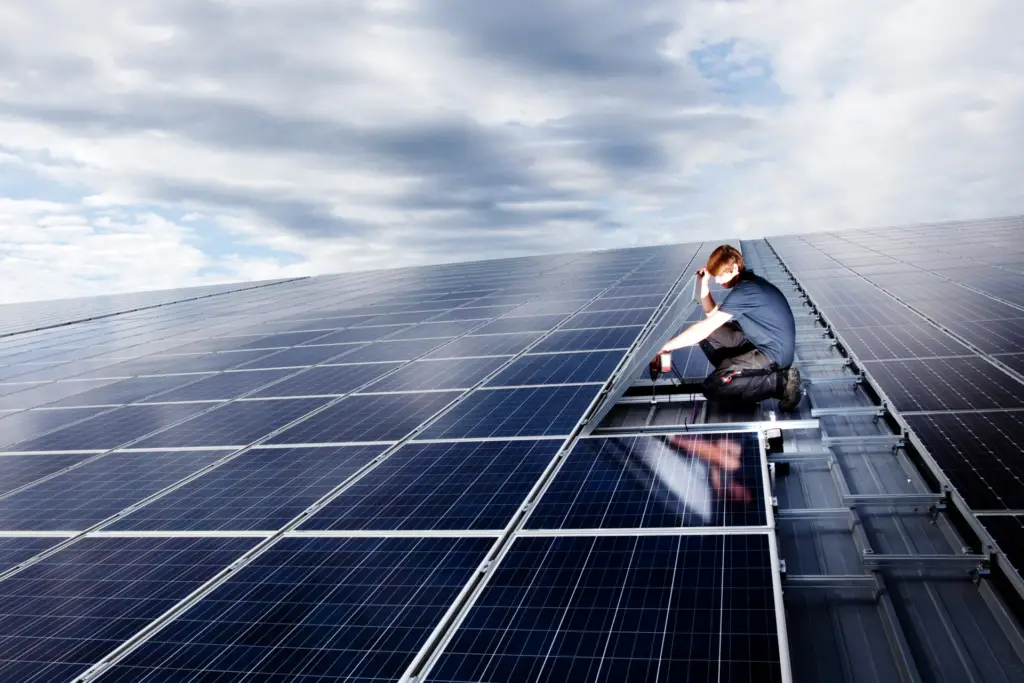
When to prefer Series Connection?
The series connection is suitable when there are no shadows present, as it maximizes energy generation. It is important to remember that even slight shadowing of a single panel within a series can dramatically reduce the system’s overall power output. Therefore, every individual panel’s performance is of utmost importance in a series connection.
Moreover, a series connection of solar panels is ideal when a low-amperage solution is required. With reduced current flow, it allows the usage of thinner gauge wires, resulting in cost savings and simplified wiring management. However, it is worth noting that these wiring cost savings may be offset by the need to purchase a solar charge controller.
When connecting panels in series, it is essential to employ a maximum power point tracking (MPPT) charge controller. The MPPT controller adjusts the voltage and current of the solar panel array to match the voltage of the battery bank, ensuring optimal power transfer.
Utilizing a cheaper pulse-width modulation (PWM) controller in such a case would lead to huge power loss. The PWM controller reduces the high voltage provided by the panel array to fit the battery’s requirements without adjusting the current, resulting in inefficient power conversion.
Wiring solar panels in parallel

When wiring solar panels in parallel, you join the positive and negative terminals of each panel. In other words, the circuit’s overall voltage output will remain constant at the level of a single panel, but its overall current output will be the total of the current outputs from all the panels.
Solar panel wiring in parallel can be helpful if you want to increase the current output of your solar system without increasing the voltage. For instance, if you have two solar panels with a voltage output of 12 volts and a current output of 5 amps, connecting them in parallel will result in a total current output of 10 amps while maintaining the voltage output at 12 volts.
Before wiring the panels in parallel, it’s crucial to check sure they have the same voltage and current ratings. It may result in problems, such as one panel drawing more current than the other, which lowers the system’s overall performance, if one panel has a greater voltage or current rating than the other.
To guarantee the security of your system and avoid any electrical fires, it’s also crucial to employ the proper wiring and fuses.
Let us understand this with an example –
Example –
Suppose you have three solar panels with the following specifications:

| Panel1 | 6 volts | 3 amps |
| Panel2 | 6 volts | 3 amps |
| Panel3 | 6 volts | 3 amps |
For example, in the image above, three solar panels with specifications of 6 volts and 3 amps each were connected in parallel. The total voltage output of the circuit would be 6V.
The overall current output of the circuit would be the sum of the individual panel currents:
3A + 3A + 3A = 9A
The total power output of the circuit would be:
6V x 9A = 54 watts
It’s important to note that when wiring solar panels in parallel, all panels should be of the same rating and orientation. This ensures that the current output of each panel is similar and reduces the risk of overloading one panel and reducing the overall efficiency of the circuit.
When to prefer Parallel Connection?
Parallel connection of solar panels offers several advantages, especially in situations where shading conditions vary. Each solar panel runs independently of the others when solar panels are connected in parallel. This means that even if some panels become partially shaded or experience reduced sunlight, the remaining unshaded panels in the array will continue to generate energy at their optimal capacity. This ensures that the overall energy production of the system is maximized, despite the shading issues.
Furthermore, the parallel configuration creates a low-voltage system that is well-suited for use with inexpensive Pulse Width Modulation (PWM) controllers. In this setup, the positive terminals of all the panels are connected together, as are the negative terminals. As a result, the number of panels linked in parallel has no impact on the system’s overall output voltage. This is advantageous because it allows for a low voltage that is close to the level required for charging batteries.
By maintaining a voltage that matches the battery charging requirements, the parallel configuration minimizes power loss through the PWM controller. This is significant because PWM controllers regulate the flow of energy from the solar panels to the batteries by rapidly switching the current on and off.
The PWM controller can work more effectively, resulting in reduced power loss and improved system performance, when the voltage of the solar panels nearly matches the charging voltage of the batteries.
A Combination of the Two
Each of our previous examples assumed that a set of identical solar panels would be connected in either series or parallel. While this is highly recommended and generally the best approach, it is not mandatory. It is possible to utilize solar panels from different manufacturers with varying electrical ratings, but it requires strict adherence to certain conditions:
- If you intend to connect the solar panels in series, all panels should have the same current rating. The total current output will be limited to that of the panel with the lowest current rating, even if the voltages will add together.
- The solar panels must all have the same voltage rating, though, if you intend to connect them in parallel. The voltage value of the panel with the lowest rating will be the system’s total output voltage.
Example of Series Connection:

In the following example, we utilized three solar panels: (3V / 1A), (7V / 3A), and (9V / 5A). Consequently, the array will generate a total power output of 19 watts (19V x 1A). However, if the first two panels had a current output of 5A, then the total power output would increase to 95 watts (19V x 5A).
Example of Parallel Connection:

In a parallel connection, the array will produce a total power output of 27 watts (3V x 9A). If the first two panels have a voltage output of 9 volts, then the total power output will rise to 81 watts (9V x 9A).
Calculator for Mixed Solar Panels Series-Parallel Connection
If you have solar panels with different specifications, such as varying voltages and currents, it is advisable to use identical panels within each array connected to a charge controller. This approach allows you to maximize solar output by combining different types of solar panels and using multiple charge controllers, with each panel array connected to its own controller. We have previously discussed in detail the topic of connecting multiple solar controllers to a single battery bank, so feel free to read it.
However, if using multiple charge controllers proves to be expensive for you, and you are willing to accept a reduction in the total power output of your panels, you can utilize the following calculator to assist you. With this tool, you can easily determine the optimal configuration for up to five different types of solar panels. Simply provide the specifications for each panel type, along with the number of panels, and scroll down to view the results.
CALCULATOR
The Best Wiring for Mismatched Panels
When solar panels are connected, the efficiency of the voltage output is decreased if the amps or voltages are not matched. The system will always select the lowest value if the sizes of your solar panels are not matched.
Therefore, it’s critical to correctly connect the wires. But regardless of whether it is wired in series or parallel, it works with both. Your solar array’s overall energy output will be decreased if you connect a solar panel with a lower power rating.
FAQ
1. Can you mix and match solar panel brands?
You can mix and match solar panel brands, but it’s important to make sure that the specifications of the panels are compatible with each other and with your system. It’s recommended that you consult with a professional installer before mixing different brands of solar panels.
2. Can I mix mono and poly panels?
Yes, you can mix mono and poly panels, but it’s important to remember that they operate differently. Poly panels are less expensive, while mono panels are typically more effective. It’s vital to speak with a qualified installer
before combining the two types of panels because doing so could compromise the system’s overall performance.
3. Can you put solar panels of different currents in series?
Yes, you can put solar panels of different currents in a series, but it’s important to ensure that the voltage output of each panel is compatible with the other panels in the series. Mismatched panels can result in reduced overall system performance and potential damage to the panels.
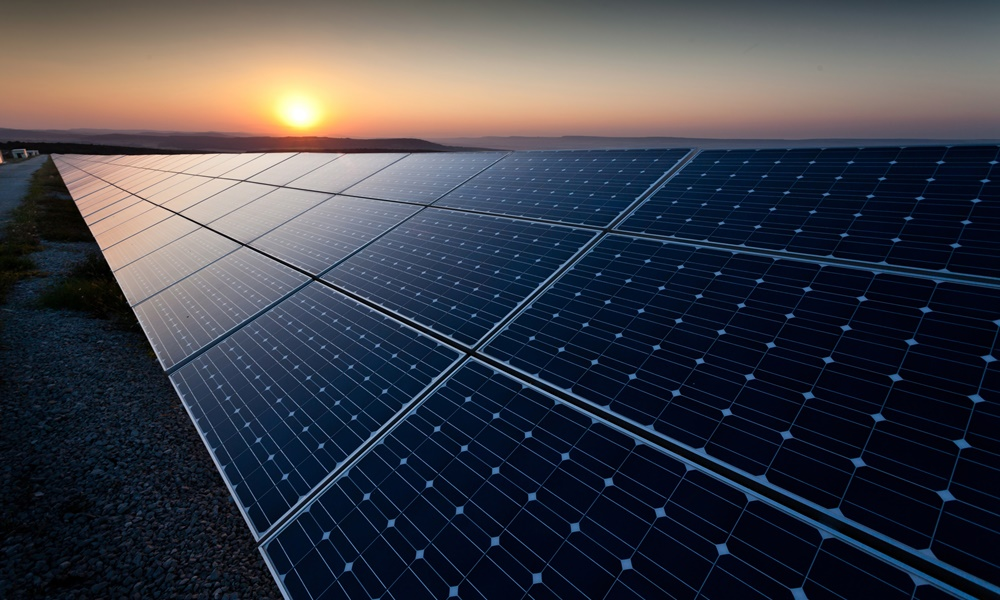
Conclusion
So, there you have it! If you’re thinking about combining different wattage solar panels to create a cost-effective solar panel system, it is possible, but there are a few things to keep in mind. Mixing panels with different wattages can reduce the system’s efficiency and overall power output. Additionally, the wiring system you select to link the panels together is quite important.
So, it’s better to use panels with similar specifications and to consult a professional installation to ensure the panels are compatible with the system. However, combining several solar panels in series, parallel, or mixed modes can help increase solar-generated power and meet our daily demand for power.

